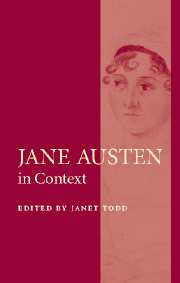6 - Memoirs and Biographies
Published online by Cambridge University Press: 19 December 2020
Summary
Some biographers suffer from an excess of source material concerning their subjects, and the resultant biographies are either very large or even run into several volumes. With Jane Austen, the reverse is the case; for many years documentation to confirm even the barest outline of her life remained scanty, so that most biographies were slight and feeble, bulked out with copious quotations from the novels. It was only at the end of the last century that a reasonably complete picture of Austen's life could be seen, based upon original research in family archives and civic records.
The richest source of biographical information is of course Austen's own letters, but these have emerged only gradually, from 1818 right up to the 1980s. During this long period the other main source of information was family tradition – the memories of her siblings and their children, which were eventually written down late in the nineteenth century. But here again, these family comments in many cases did not actually appear in print until the twentieth century.
Apart from Austen's letters, no personal documentation exists. She did not write any memoirs or journals, and although she probably kept the brief pocketbook diaries such as were commonly used by ladies of the period, none of these survives; nor did Cassandra Austen keep any record of her sister's activities. Some of the other Austens kept pocketbooks, and various miscellaneous letters still exist, written by family and friends; these provide useful dating evidence, but (with one or two exceptions) do not give any insights into Austen's character and opinions.
The first introduction of Jane Austen to her readership was made by her brother Henry, in his ‘Biographical Notice of the Author’, prefixed to the posthumous publication of Northanger Abbey and Persuasion in late 1817. By this date Henry had taken Holy Orders and become an enthusiastic cleric of Evangelical views, hence it is understandable that he should end his essay by emphasising his sister’s devotion to the Church of England. Apart from this, however, he provided the basic facts of her life, described her appearance and character, spoke of the encouragement she had received within the family to publish the novels she had written for their and her own amusement and quoted briefly from two of her letters.
- Type
- Chapter
- Information
- Jane Austen in Context , pp. 51 - 58Publisher: Cambridge University PressPrint publication year: 2005
- 1
- Cited by



